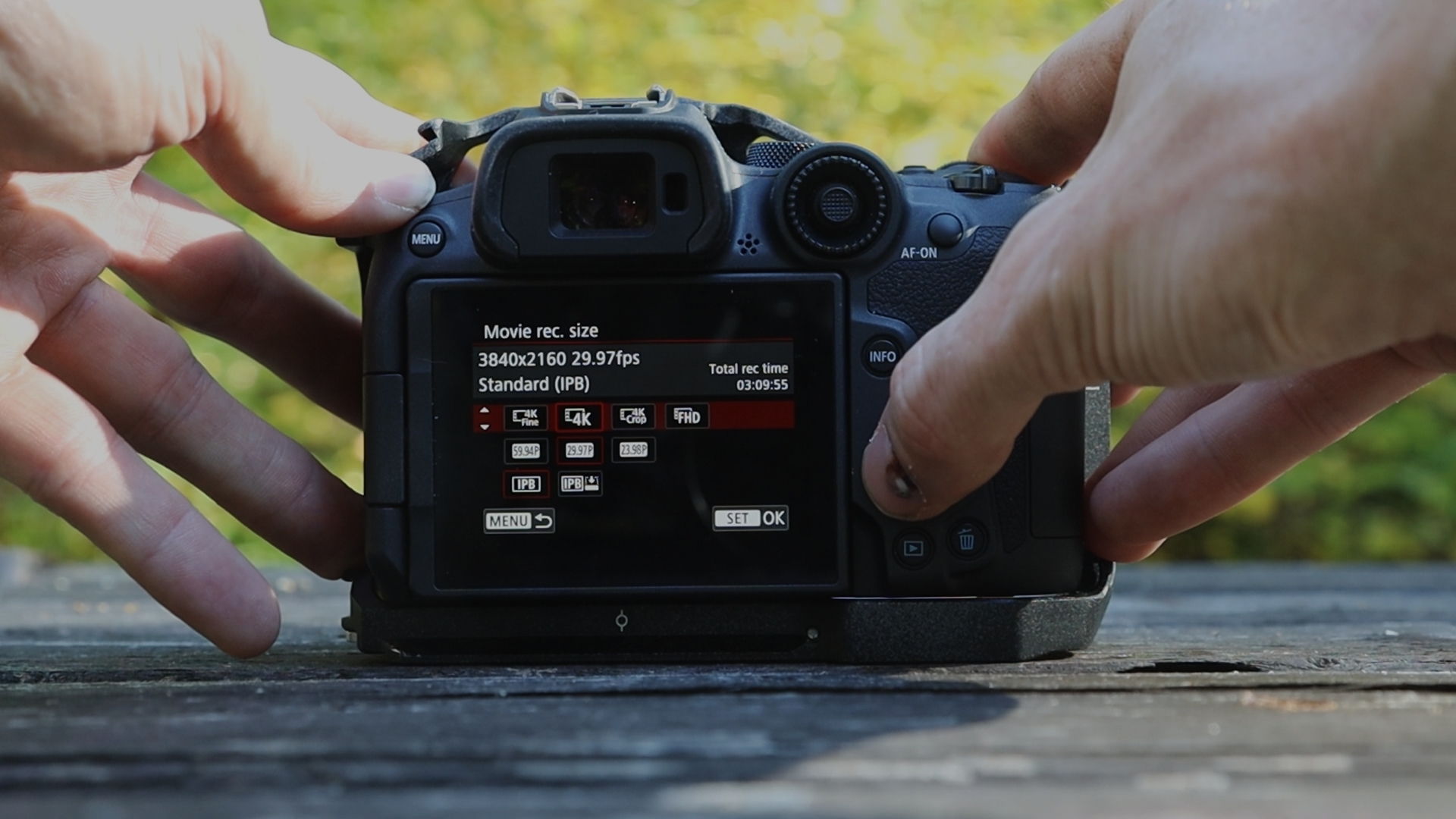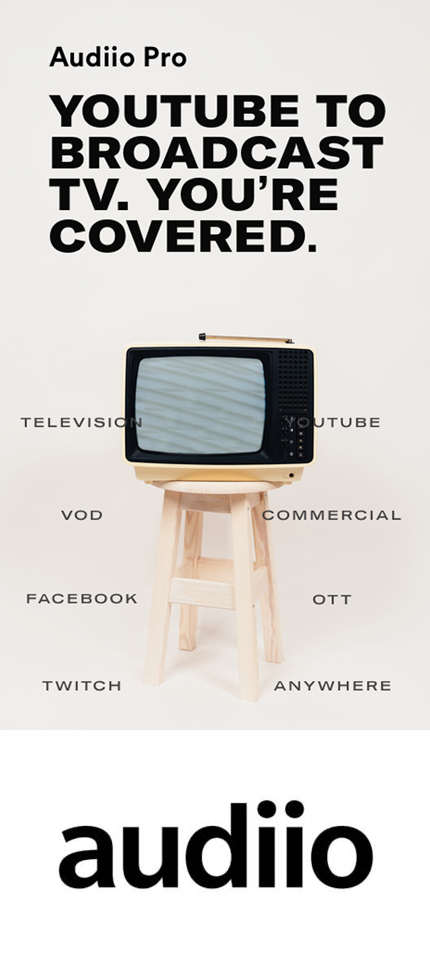Best Video Settings for the Canon R7
Filmmaking
Gear
Gear Reviews
General Topics
Tips & Advice
Videography
Pierce Codina
Oct 11, 2022

A few months ago, Canon announced their most recent addition to their mirrorless line up, the R7. Over the last six weeks, we’ve had the opportunity to use the Canon EOS R7 extensively for video content. With that we found ourselves using the same settings over and over again when we record video so today we are sharing with you our best video settings for the Canon R7.
Best Video Settings for the Canon R7
4K FINE VS 4K
One of the great things about the R7, for me at least, is how few choices there are for video. There's only like 4 main recording options, but the ones that are here are all really good. You have 4K, 4K FINE, 4K Cropped, and 1080p. With the exception of 4K Fine, all modes go up to 60 FPS, with 120p recording available in 1080p.
With that being said, we are using 4K Fine on IPB Light most of the time. We've found these to be the best video settings for the Canon R7. When Canon designed this camera, they actually put a 7K resolution sensor inside of it, and 4K Fine uses that entire sensor and compresses or "over-samples" that 7K resolution down to 4K.
As far as the compression goes, we choose the IPB Light for the simple fact that the files are smaller. We can get about double the record time using IPB Light vs IPB and the difference in quality is really not that significant, at least from what we are seeing. Since Dan is on the road full time now, he doesn’t have constant access to his long term storage options any more, so he needs to maximize the space he does actually have. Plus, most of our content gets viewed on a phone any way. I could shoot in 1080p and no one would notice. ha!

30 fps
I used to be a die-hard, 23.978 purist. I never strayed from that for several years, as I thought 24 fps was what made my footage look "cinematic". The only time I ever strayed from that was with drones, because I always saw frame dropping. Well, turns out, the same theory applies with regular video, its just more noticeable on drone footage.
Like I mentioned before, most of the content that I create ends up being viewed on mobile device, most of which have a 60hz or 120hz refresh rate. I bet your living room TV is one of those two. 23.978 or even 24 does not divide into 60 or 120 evenly, which causes frame skipping to compensate for the lost frames. Now, I failed high school math so don't listen to me but 30 fps DOES divide into 60 and 120 evenly, giving it a much more smooth playback.
Something that I've also noticed since switching to 30fps, my videos online seem to come out looking more "high resolution" since they are played back much more smoothly. Kind of a nice, added side effect.
CLOG3
My Canon Log Settings are CLOG3, View Assist: On
Characteristics
Sharpness - +3
Saturation - 0
Hue - 0
Cinema Gamut Color Space
I film everything in CLOG3. It gives me a solid, flat color profile with 10-bit color depth. With CLog, I do tend over expose about a stop, since I've found that it helps to retain more of the shadow detail. The highlight recovery on CLOG3 is very good as well, which is another reason I tend to push towards the over exposed end of the spectrum.
Once I'm finished with filming, I'll do a simple color conversion in Resolve either using Canon's provided Lut, linked below, or using Color Space Transform in Resolve, which I just did a video on btw (Point to Top left). Especially for social media, where things don't need to look super fancy, this is the fastest way to turn clips around.
But even though CLOG3 allows me to turn things around quickly, I can also get a lot of flexibility out of the image if I need to. CLOG3 is in most of canons high end cameras as well, so its a broadly used color space.
AF Settings
I know that autofocus is a hot topic right now (So hot Right Now), and the battle between Canon and Sony is fierce. But, for me, Canon's AF is the only one that I've gotten to work for me. Or maybe i started working with it..... anyway, I'm used to how the AF system responds in Canon Cameras, so thats why i use it.
This little body has the same AF algorithms as the R3, meaning we are getting very similar (not the same) AF performace. That also means we get the same subject tracking. Now personally, I keep mine set to people, since thats what I shoot the most, but if you shoot wild life or cars, there are specific options for those.
I also keep my servo AF on, this just lets the camera continue to focus, even after the half shutter has been pressed, we've found this to be best setting on the R7.
I keep my subject area to spot, and I keep eye detection enabled as well
IBIS
The last thing I want to talk about is IBIS. This camera is stellar with its IBIS performance. When that system gets coupled with the stabilization that is in the RF L series lenses, the result is almost like a gimbal.
When I shoot, I try to use just the normal setting for the IS. I've found that the enhanced setting seems to fight me with what I'm doing most times. But the normal IS is where I've found the sweet spot. Now, if you want smooth footage while going handheld you do have to be very intentional with what you're doing. You have to do what I call the "ninja walk" to help lessen the shock delivered to the camera. It's also helpful to maintain 3 points of contact with the camera, which is where my neck strap comes in handy. If you can do that, your footage is going to be so much smoother.
Thats all We've got for you guys today, thanks for comin and hanging out! If you have any questions, go ahead and put down in the comments and while you're there, if you could tap those like and subscribe buttons, we would really appreciate it! I will see you all in the next video, until then...
Own one like this?
Make room for new gear in minutes.
Loading...
